This course investigates how contemporary technologies can inspire novel forms of of creative practice. It will introduce software programming and creative coding techniques within the context of the digital media design. Media artists and designers have been utilizing computers for innovative creative expression since the late 1960s; the recent proliferation of low-cost consumer grade devices with advanced sensing, display, and computing capabilities, such as smart phones, Virtual Reality, drones, 3D printers, and microcontroller kits, marks possibly a new era of creative exploration. The field of “creative coding” emphasizes the goal of expression, rather than function, and creative coders combine computational skill with creative work in a variety of media. This is a project-based course designed to provide an introduction to current creative coding programming paradigms, and investigate the challenges and opportunities that emerge when using new technologies for expressive purposes.
The class projects will focus on creative programming for a high resolution, largest in the world, virtual reality environment CAVE2 in the Electronic Visualization Laboratory (EVL). To contextualize these projects, we will read widely from both seminal texts in multimedia and recent proceedings from computer science and media arts conferences, such as ACM SIGGRAPH and the International Symposium on Electronic Art (ISEA). Projects from this course were exhibited during the Year End Show 2017 in the EVL's CAVE2.
In 2017 the course collaborated with the curator of the 150 N Riverside media stream Yuge Zhou on the development of the public installations for the 150 N Riverside Media Stream. This is an exciting new public arts venue with a unique, 3,000+ square foot LED screen; the largest in Chicago. Students worked in teams to realize concepts and develop prototypes for 150MEdiaStream. All the concepts created in this course were submitted for professional review. Selected concepts will be funded to be realized as public installations in 2018.
Week 1
Course overview & logistics: syllabus; schedule.
Content introduction: intro to course.
Team formation: questionnaire.
Intro to 3D modeling (models, materials, textures, editing, export).
Jeffrey Shaw, The Legible City, 1988-91.
Maurice Benayoun, World Skin: A Photo Safari in the Land of War, 1997; Presentation at Tools for Propoganda, 2000.
Skip Rizzo, Medical Virtual Reality, 2014; Virtual Reality Applications to Address the Wounds of War, 2013.
Hunter Hoffman, Virtual Reality Pain Reduction, 2015; SnowWorld, 2003.
Marcos Novak, Liquid Architectures in Cyberspace, 1991.
Char Davies, Osmose, 1995.
Maya 2017 Essential Training with George Maestri on Lynda.com (1, 2)
Complete the Maya “still life” assignment: Maya Assignment, Maya scene file.
Basic 3D modeling. Polygonal modeling.
Timothy J. Reynolds, Low poly art, AWWWARDS
Paper City Vimeo
Kenneth A. Huff
Meats Meier
Game of Thrones intro
Official Show Open , 1:41;
Art of VFX
Kirk Shintani from Elastic.
What software was used to create the intro for Game of Thrones (TV series)?
Pixar Animation- Luxo Jr.
Timothy j. Reynolds
Maya 2017 Essential Training with George Maestri on Lynda.com (3, 4, 5)
Polygonal modeling 2. Shading, Materials, Textures
Paul Debevec, Light Stage X Smithsonian 3-D portraits of President Obama
Skin Stretch: Simulating Dynamic Skin Microgeometry SIGGRAPH 2015
The Digital Emily Project
UV mapping tips
Maya 2017 Essential Training with George Maestri on Lynda.com (6, 10, 11)
Field trip to the new 150 N Riverside building to see 150 Media Stream , a unique, 3,000+ square foot LED screen; the largest in Chicago. http://150northriverside.com/150-media-stream/ Intro to Unity (unity overview, editor, primitives, materials, textures, terrain, prefabs)
meeting with Media Stream curator Yuge Zhou
Lobby art in upcoming office tower will be Chicago’s largest LED display
Preliminary concepts / Media Stream / team proposals
Readings + Videos:
Unity 5: 3D Essential Training by Adam Crespi/ Ch. 1, 2, 4
Unity Manual
Unity tutorials
Intro to Scripting (variables, functions, triggers, collision detection, sounds, colors)
Unity 5: 3D Essential Training by Adam Crespi/ Ch. 3, 7
Unity Scripting / Ch. 1-9
Assignment :
Project 1
Unity Interaction, Materails, Colors
Review Project 1
Assignment 5 Unity Interaction
Unity components, Prefabs, Instantiate
Interaction, Prefabs, Components
Teams / CAVE2 project concept / Assets / Unity scene
Project concept review 2
Lab - Project development
Assignment:
CAVE2 project final concept / Assets / Unity scene Project 1 / CAVE2 Unity scene
CAVE2 testing with Arthur Nishimoto
Testing in CAVE2
CAVE2 Unity Tutorial
Download Unity template for CAVE2 Environment
CAVE2 Unity tutorial documentation
CAVE2: A Hybrid Reality Environment for Immersive Simulation and Information Analysis
Project 1 Submission Guidelines
Team 1 - Xiao+Marcin
Drunk Driving Simulator [concept] [video] [image]
Team 2 - Trevor+Jake
Pistachio Gallery [concept] [video] [image]
Dyamond
Chicago Typography [ concept] [video] [image]
Peter
Dreamatorium [concept] [video] [image]
Mitch
Untitled [concept] [video] [image]
Team 1 - Mich Massie
CMYK Chicago [concept] [video] [image]
Team 2 - Jake
New Faithful [concept] [video] [image]
Dyamond+Marcin
People of Chicago [ concept] [video] [image]
Peter
Trees of Life [concept] [video] [image]
Trevor
Ragtime [concept] [video] [image]
Teleport, Collisions, Parenting
Review Project 1 / Lab / Work session in the CAVE2
Project 2 - 150MediaStream concepts
Week 13
Final Review Project 1 in the CAVE2
Introduction to Motion Graphics with After Effects
Project 2 - 150MediaStream concepts
Project 2 Concept Review 1
Motion Graphics 2
150MedisStream - Lab
Review Project 2 with Yuge Zhou
Final Presentations April 26
— External hard drive to save your back up files. Students are required to store and backup their files appropriately and an additional data storage is strongly advised for back-up.
— Maya 2017 - download eductional license
— Unity 3D
On-time class attendance is mandatory. It is not possible to make up or compensate for missed class sessions. More than two unexcused absences will result in a reduction of the final grade by one letter grade; with every additional unexcused absence, the final grade will drop by an additional grade. Some of the discussions and exercises are done and graded in-class so you must attend class to receive these points.
For best in-class participation, you should complete required readings and tasks before class (will be specified in the study guide in each module). Be prepared for a lot of hard work: be prepared to code, often, and much outside of the class. This course will be difficult but also very much in-depth and useful to prepare your creative portfolio.
There is a lot of self-study required as our lecture time limited as well as our lab time, and the goal is to maximize that time. Each session will have required pre-reading and post-reading. The instructor reserves the right to add online tutorials, lectures and video sessions to class lectures and homework.
You must submit all assignments via UIC Box unless otherwise instructed on the deadline specified for each assignment. Assignments must be professionally prepared with recommended computer applications. Unless otherwise stated, assignments must be submitted electronically to the UIC Box.
Projects more than 5 days late will not be accepted. Be sure to submit the work well ahead of due time. Excuses like website or computer error will not be accepted after the due date.
‘Incompletes’ will only be granted according to University policy.
A = Consistent growth as well as excellent work that consistently goes above and beyond what is required.
B = Above average growth as well as above average work.
C = Average growth as well as average work.
D = Dissatisfactory growth and incomplete work.
E = Dissatisfactory growth, incomplete work, and poor attendance.
The numeric breakdown for the final grade follows:
40% Asignments and Exercises
40% Final project
20% Attendance and participation
Any individuals with learning disabilities or special needs must make the instructor aware of them prior to the due date of the first major assignment. Those who require accommodations for access and participation in this course must be registered with the Disability Resource Center. Please contact DRC at 312/413-2183 (voice) or 312/413-0123 (TTY). http://www.uic.edu/ depts /oaa/disability_resources /contact.html
If you wish to observe your religious holiday, which is in the conflict with mandatory academic attendance, you should notify the instructor by the tenth day of the semester of the date on which you are requesting an absence.
You are responsible for understanding what constitutes academic dishonesty. Academic dishonesty is an extremely serious offense. All cases of academic dishonesty will be dealt with in accordance with the policies of the University as published in the Undergraduate Catalogue and the University of Illinois at Chicago policy on Academic Honesty at: http://www.uic.edu.ucat/cat1315archive/index.shtml
Leonardo, 2015 and earlier (Available from MIT Press through UIC digital library)
Proceedings of ACM SIGGRAPH, 2016 and earlier. (Available from ACM through UIC digital library) Proceedings of the International Symposium on Electronic Art, 2015 and earlier (Available online)
Selected readings from The New Media Reader, edited by Noah Wardrip-Fruin and Nick Montfort, MIT Press 2003.
Peripheral Vision: Bell Labs, the S-C 4020, and the Origins of Computer Art, Zabet Patterson, MIT press, 2015.
Gödel, Escher, Bach: an Eternal Golden Braid, Douglas Hofstadter, Basic Books, 1991.
Unity Game Development Essentials Kindle Edition by Will Goldstone.
Unity 3D Game Development by Example Beginner’s Guide by Ryan Henson Creighton
Learning C# Programming with Unity 3D by Alex Okita.
Beginning Visual C# Express: A Computer Programming Tutorial by Philip Conrod and Lou Tylee.
Unity website: http://unity3d.com
Unity Asset Store: https://www.assetstore.unity3d.com
Unity Scripting Reference: http://docs.unity3d.com/ScriptReference
Unity Tutorials: http://unity3d.com/learn/tutorials
MaxMSP: https://cycling74.com
Lynda.com Training Tutorials@UIC: http://accc.uic.edu/service/training
Box@UIC, http://accc.uic.edu/service/box
Blackboard, http://blackboard.uic.edu
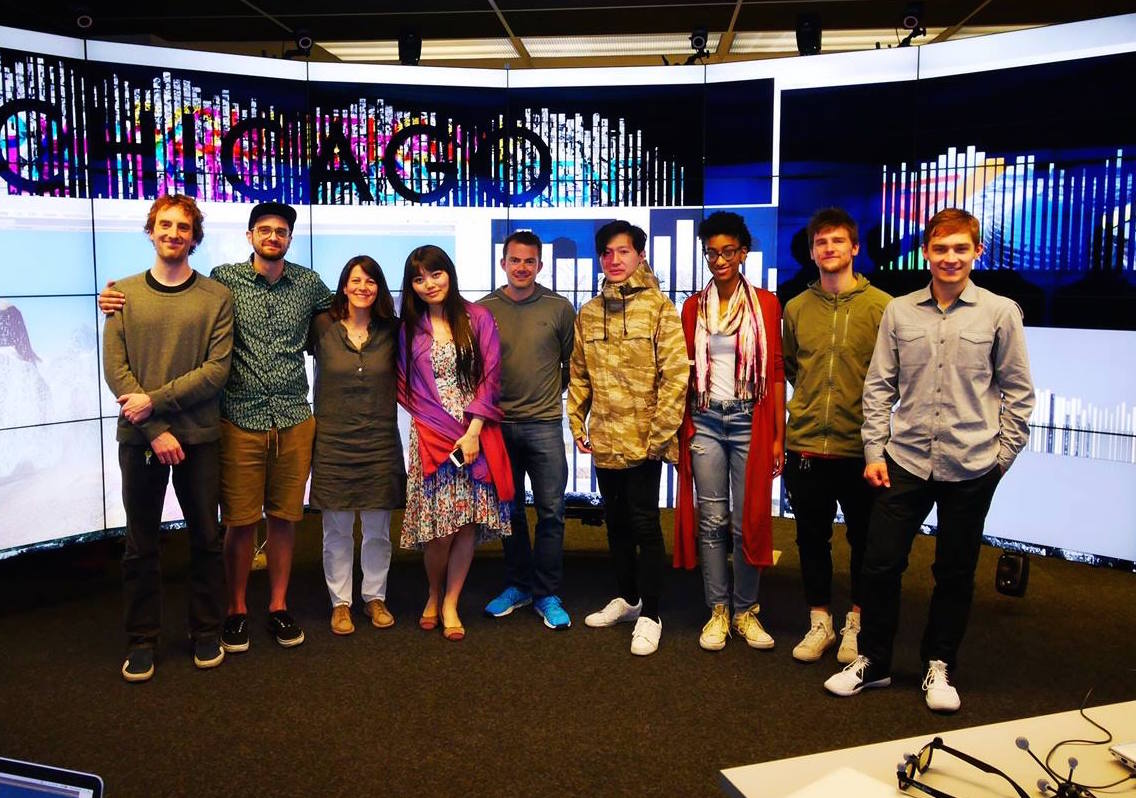
Final review with students,instructor Daria Tsoupikova and 150 Media Stream curator Yuge Zhou in the CAVE2.
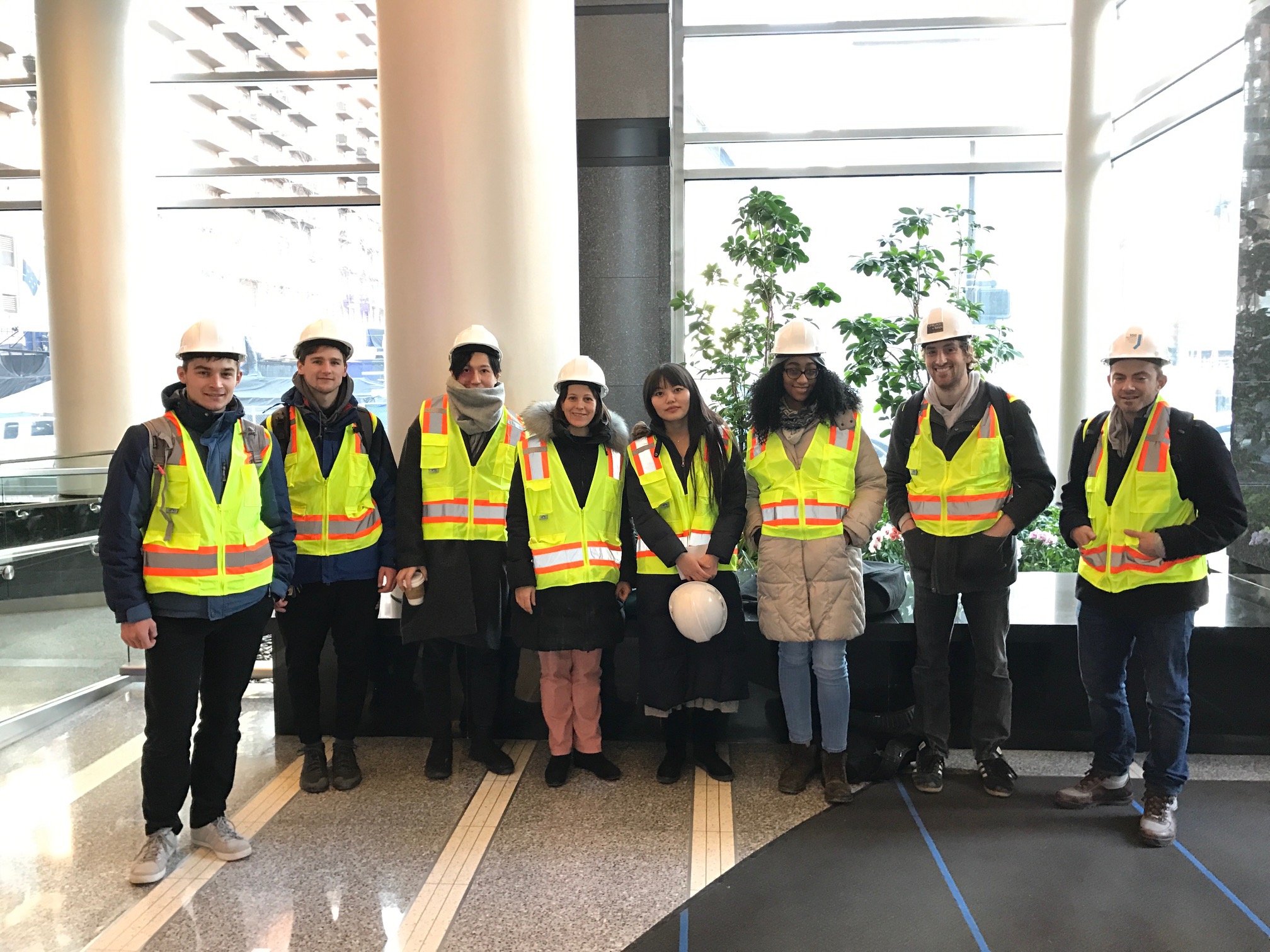
Marcin, Peter, Xiao, Daria, Yuge, Dyamond, Trevor and Jake during the observation trip. 150MediaStream construction site.
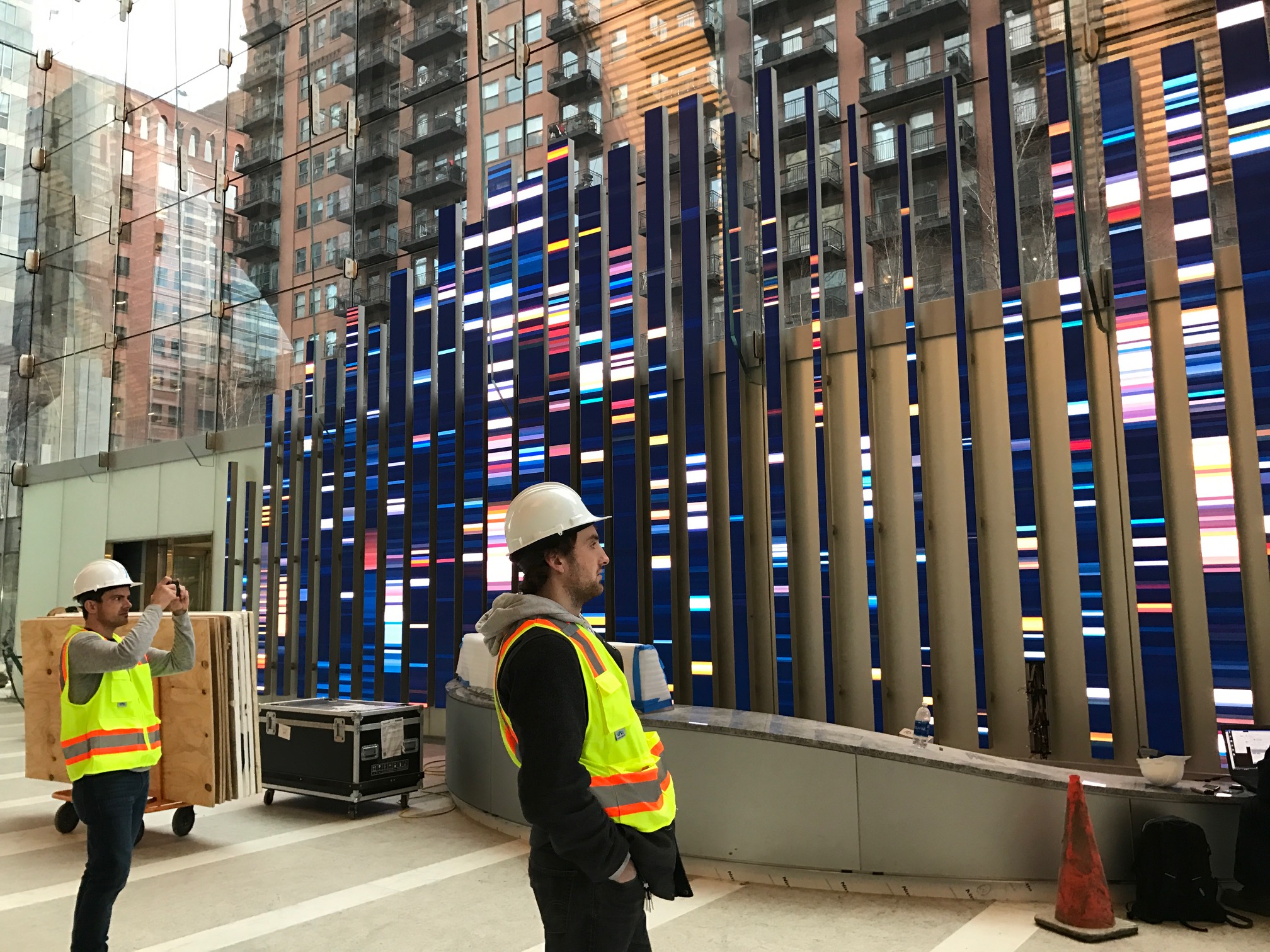
Jake and Trevor photographing 150MediaStream construction site.
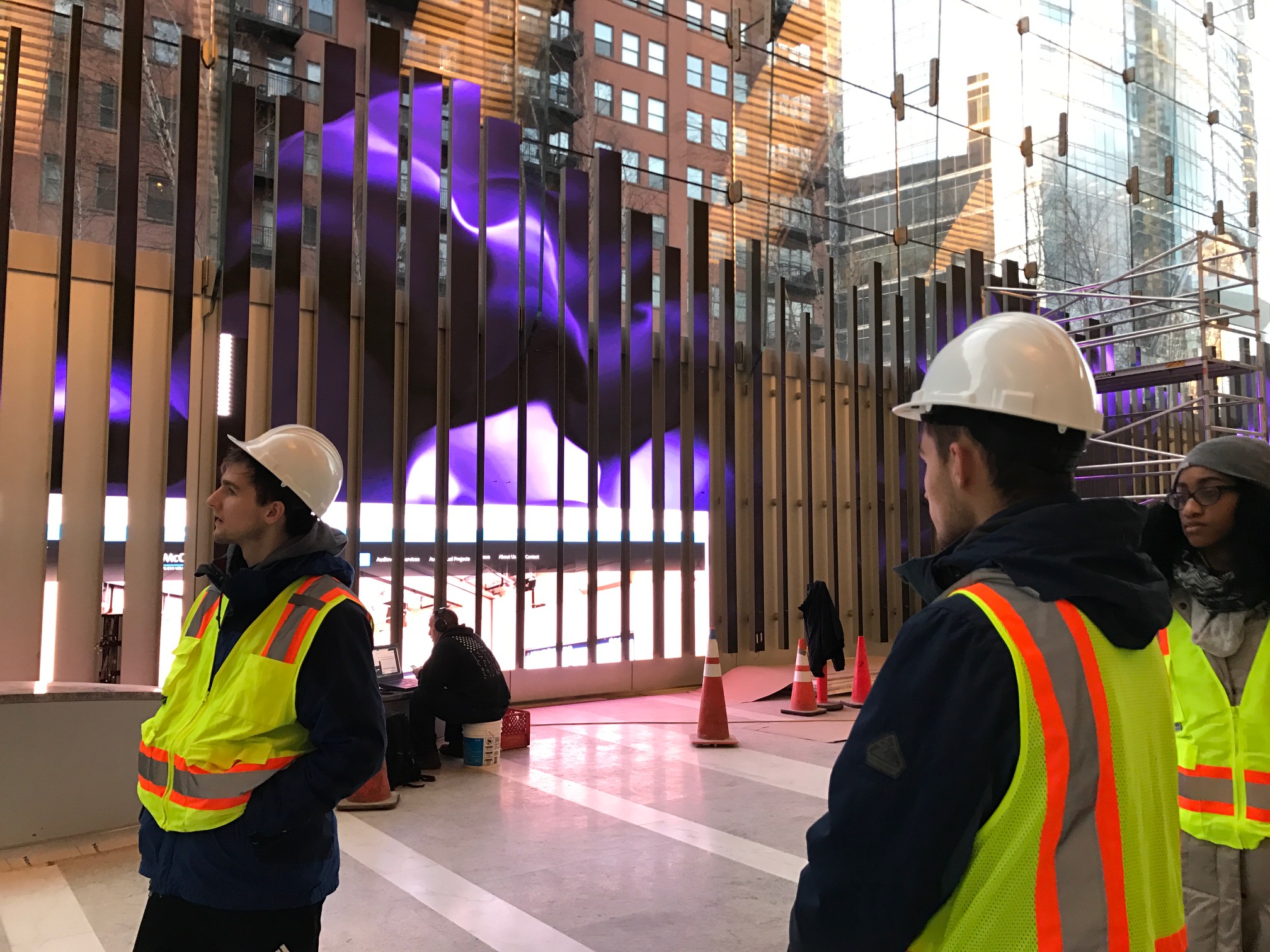
Peter and Marcin during the observation field trip.

Students research at the 150MEdiaStream construction site.
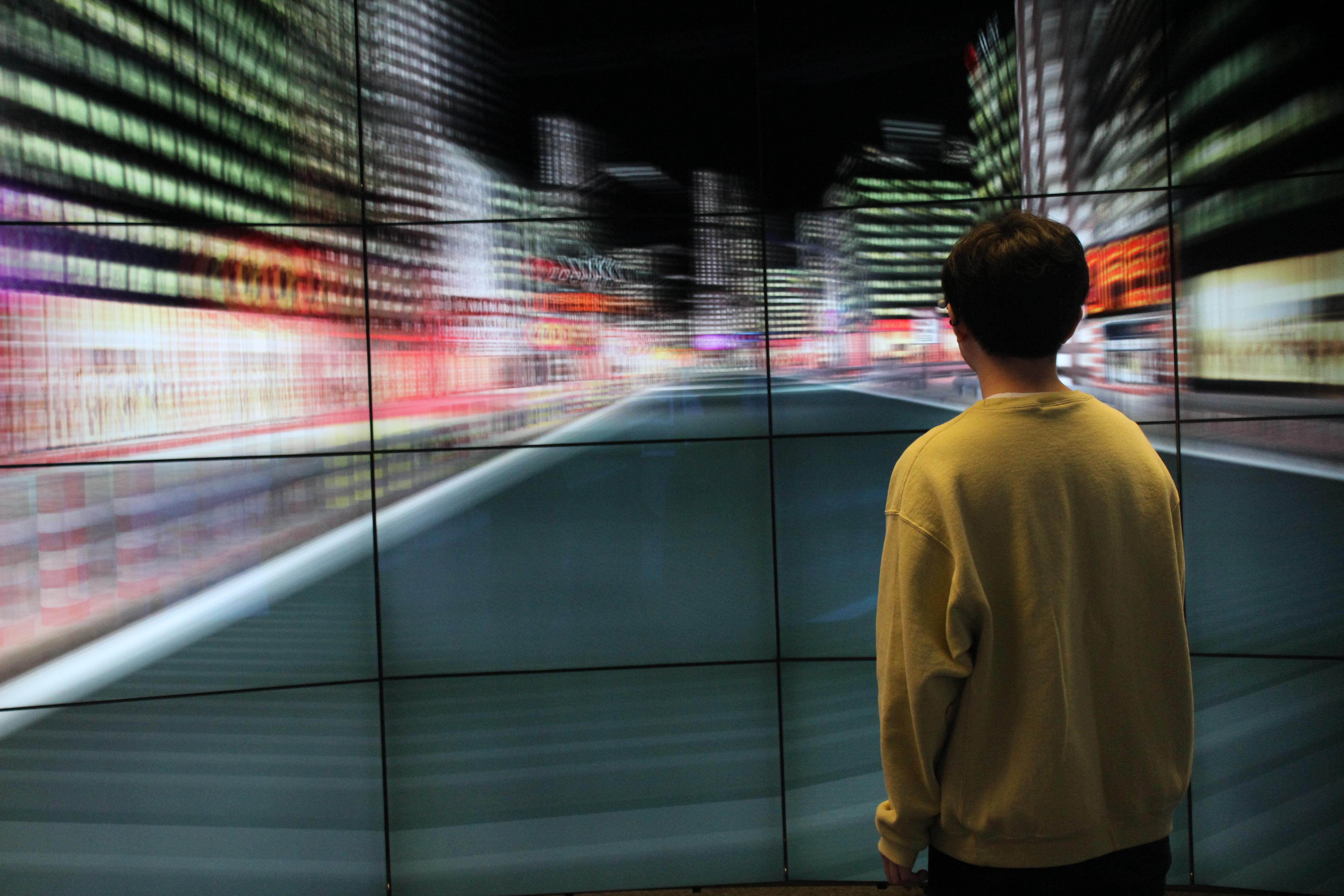
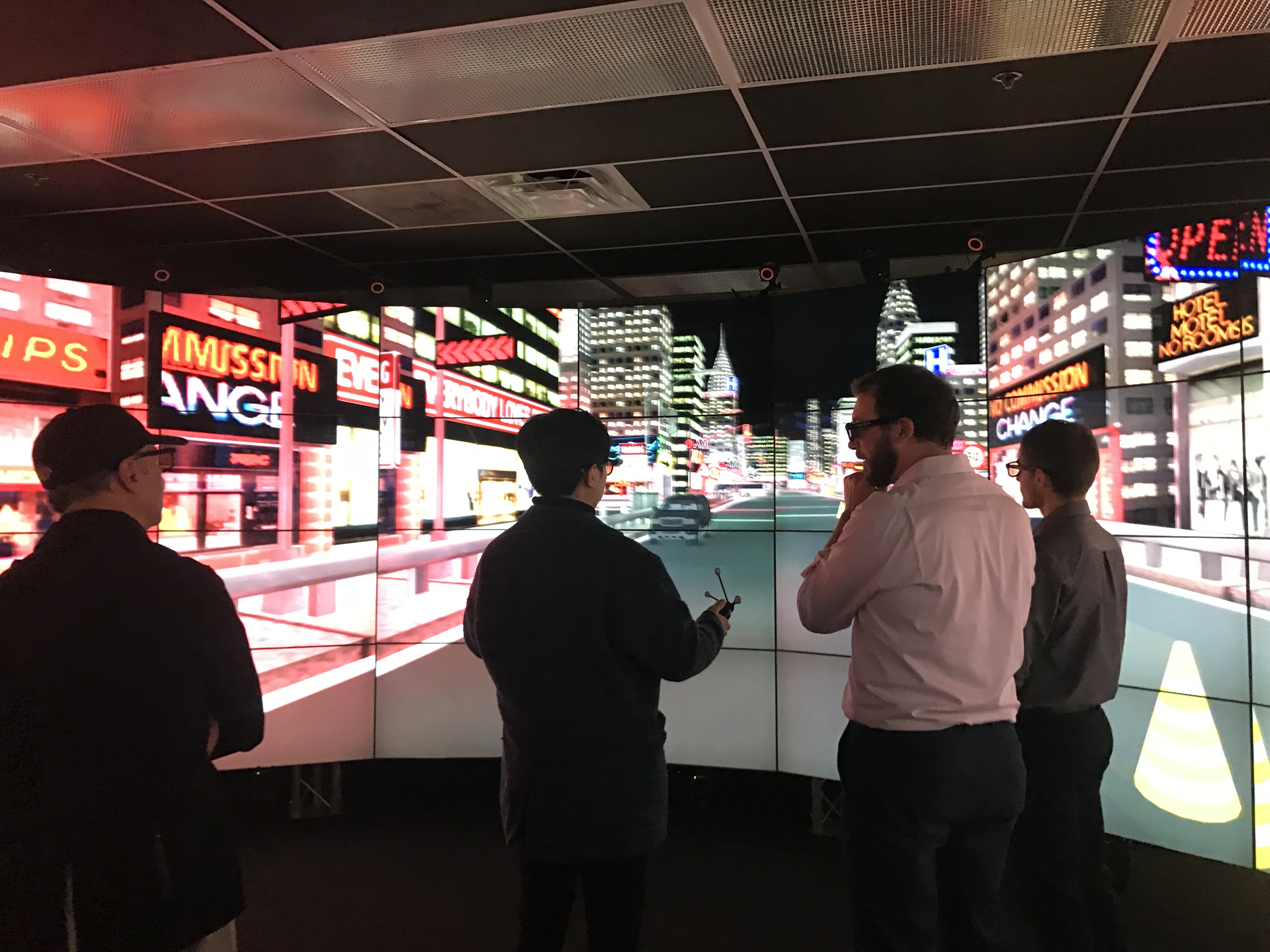
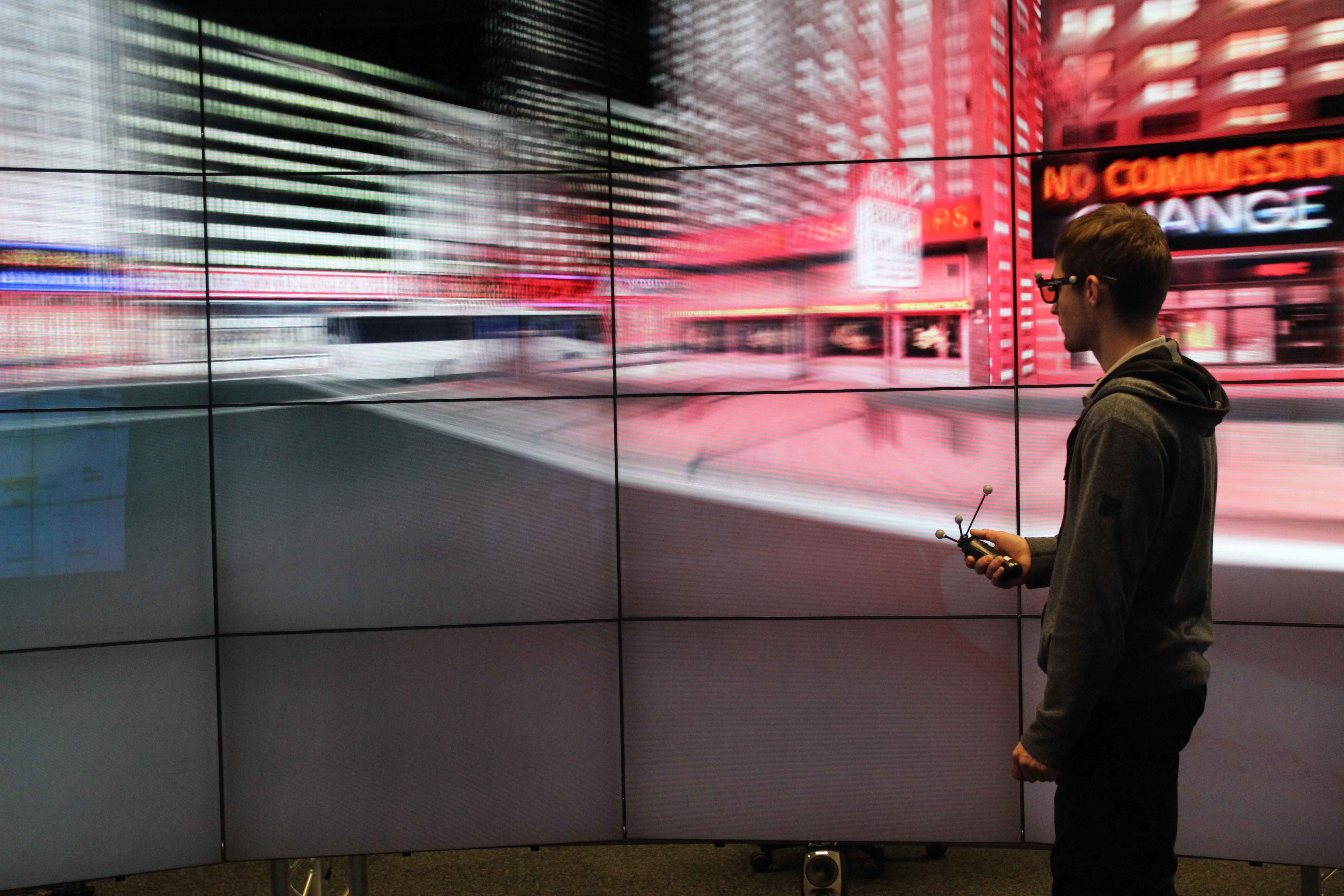
Marcin and Xiao developed Virtual Reality simulator researching the consuquences of drunk driving for the safer future.
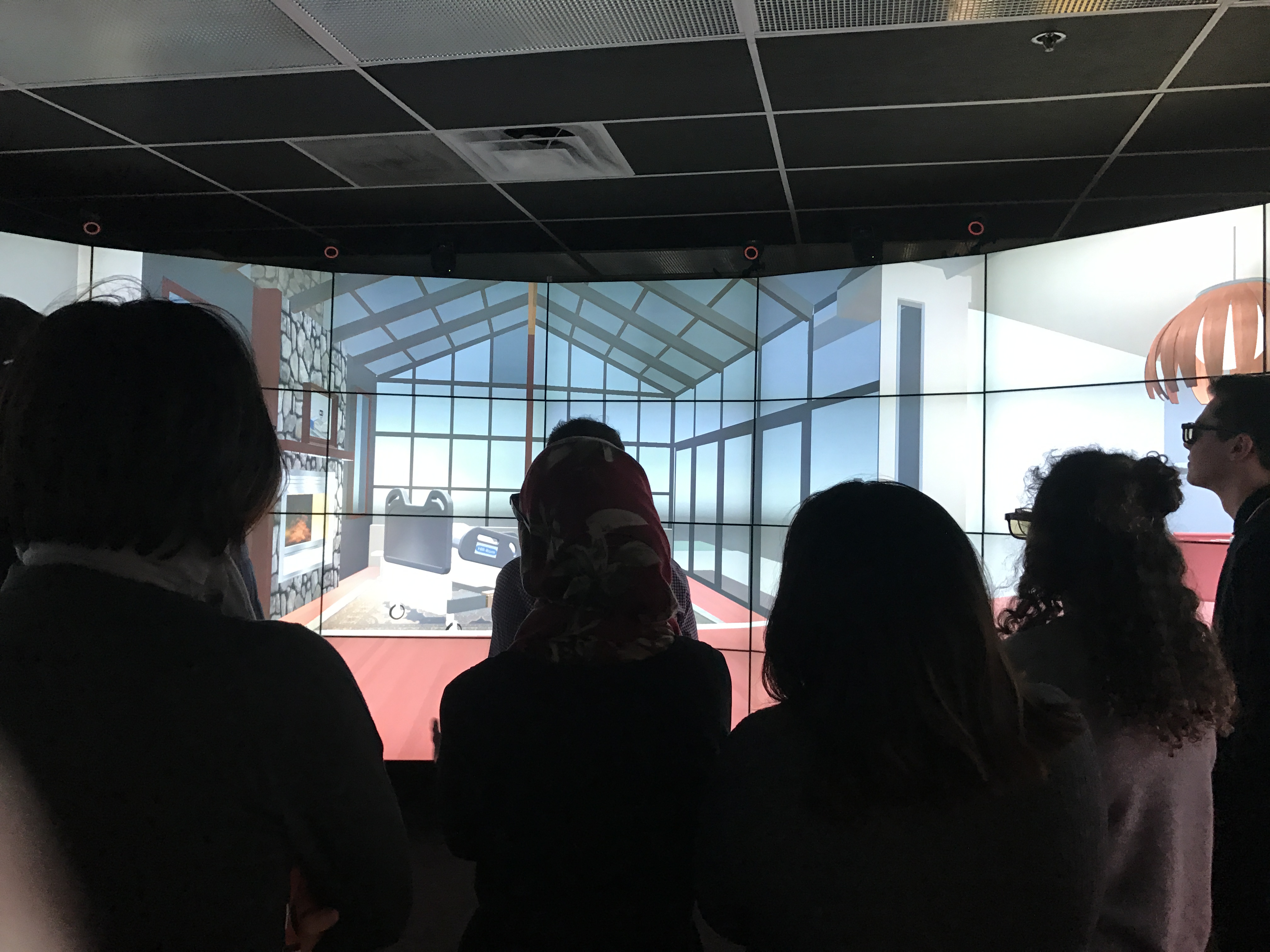
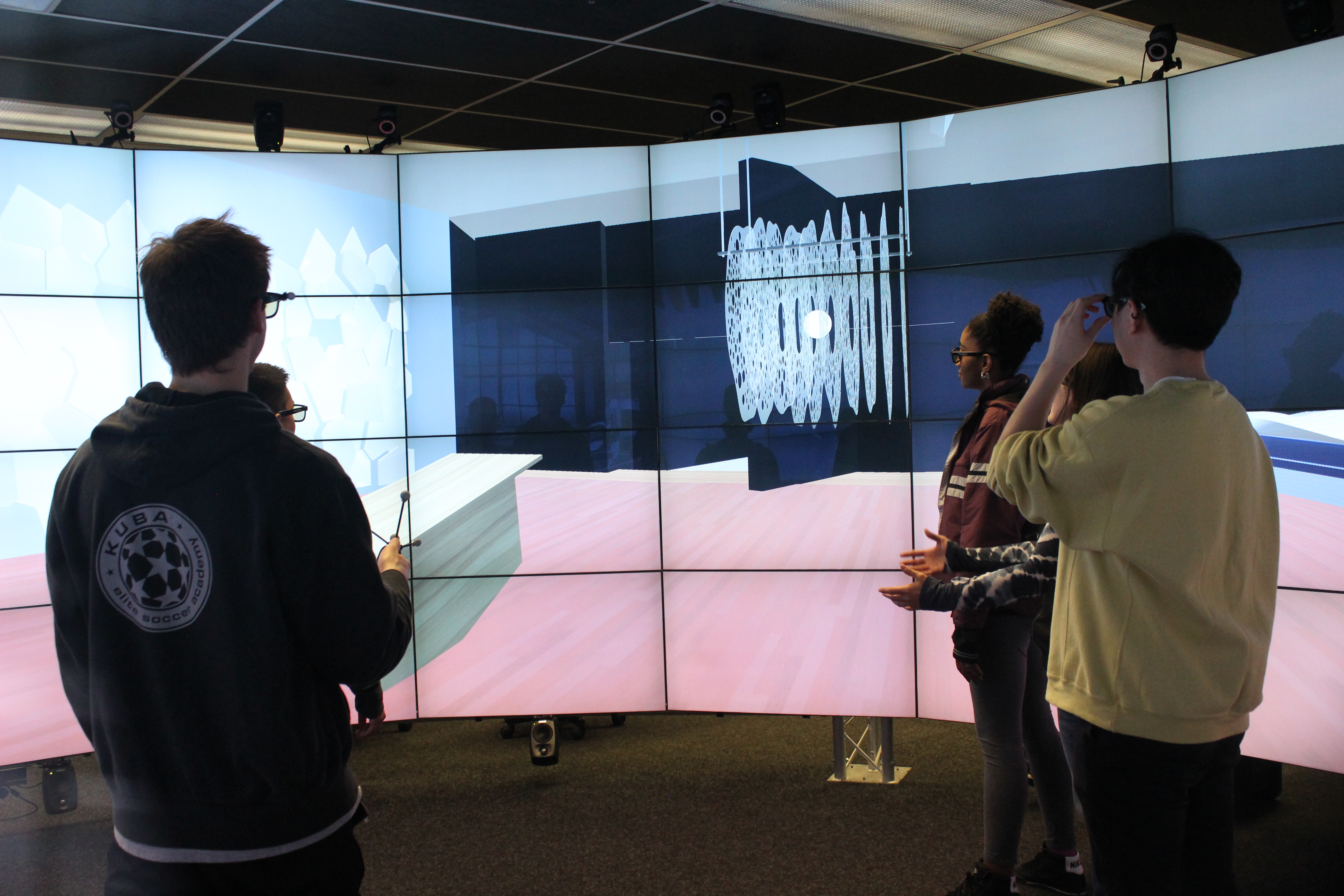
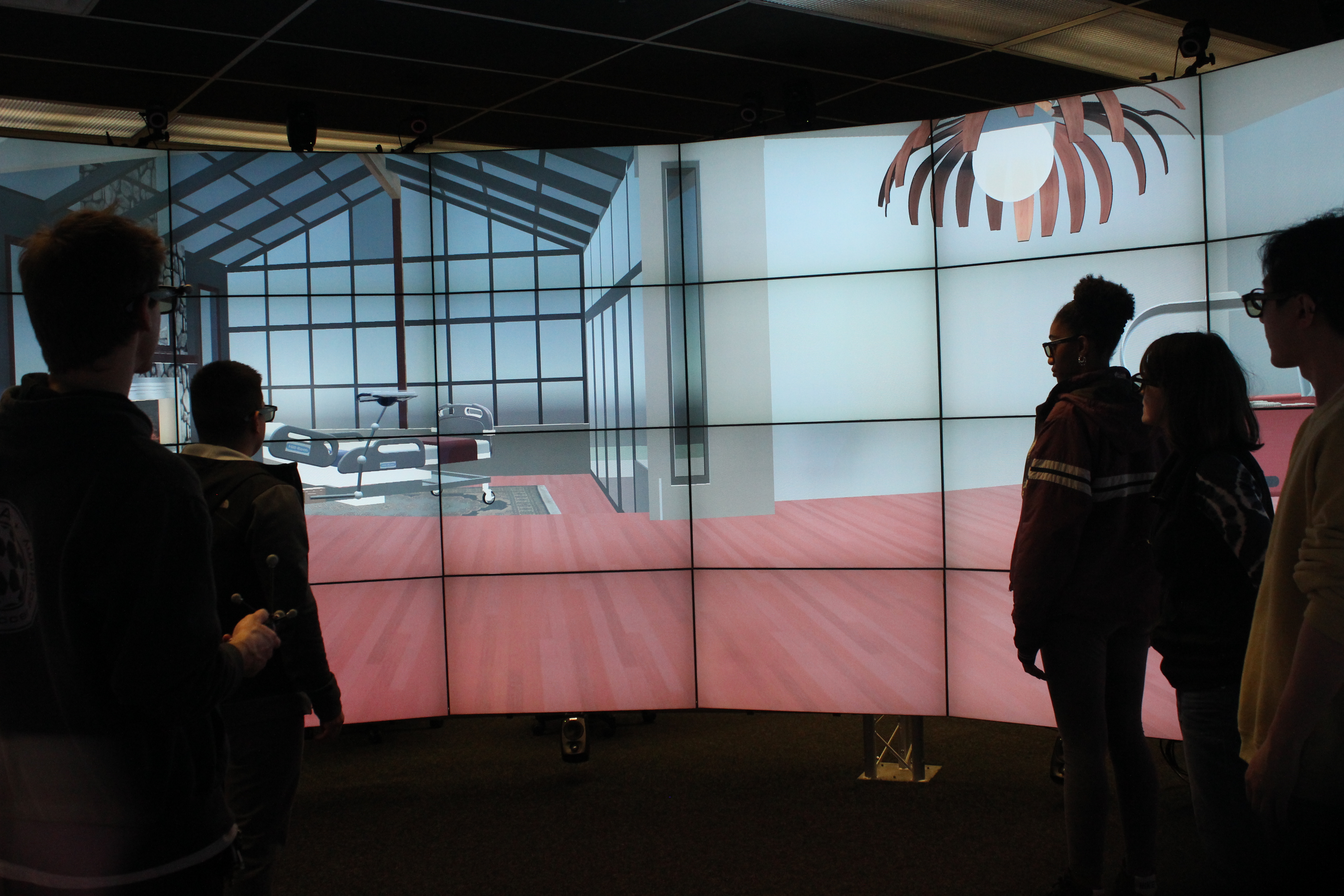
Trevor and Jake created a virtual gallery that exhibits the industrial design projects in real size using animations, sounds and 3D models.
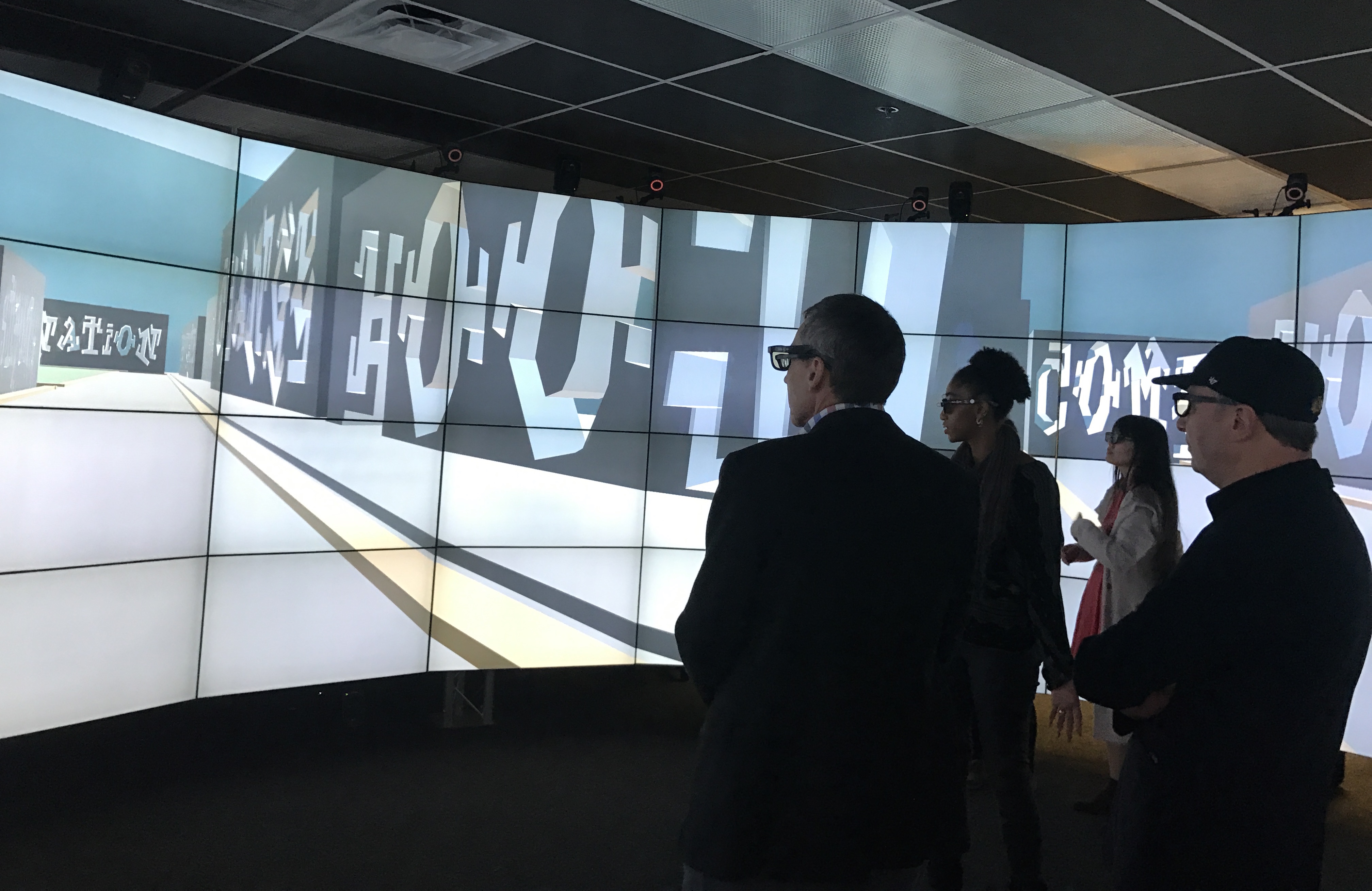
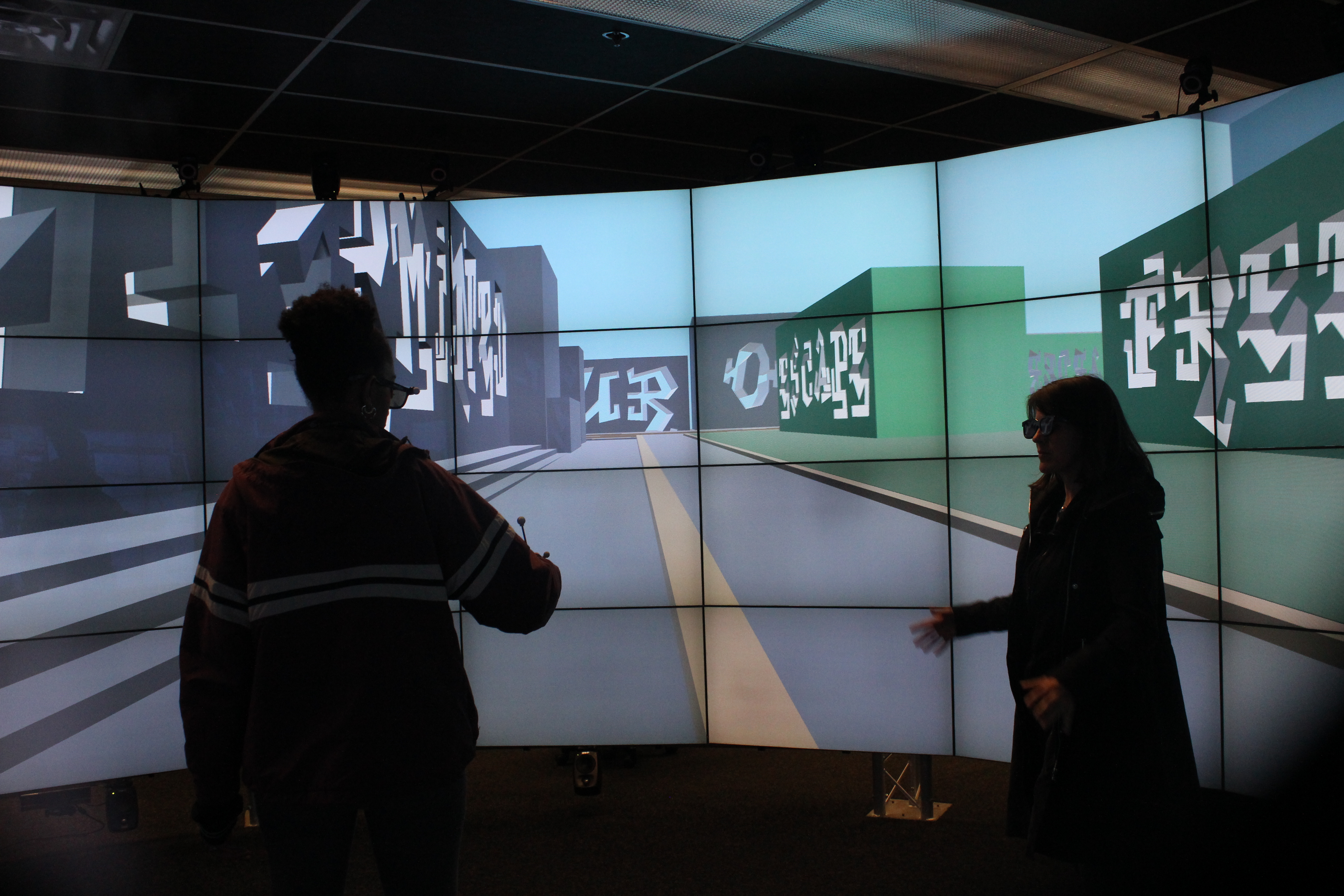
Dyamond created a virtual environment to explore Chicago neighbourhoods through typography.
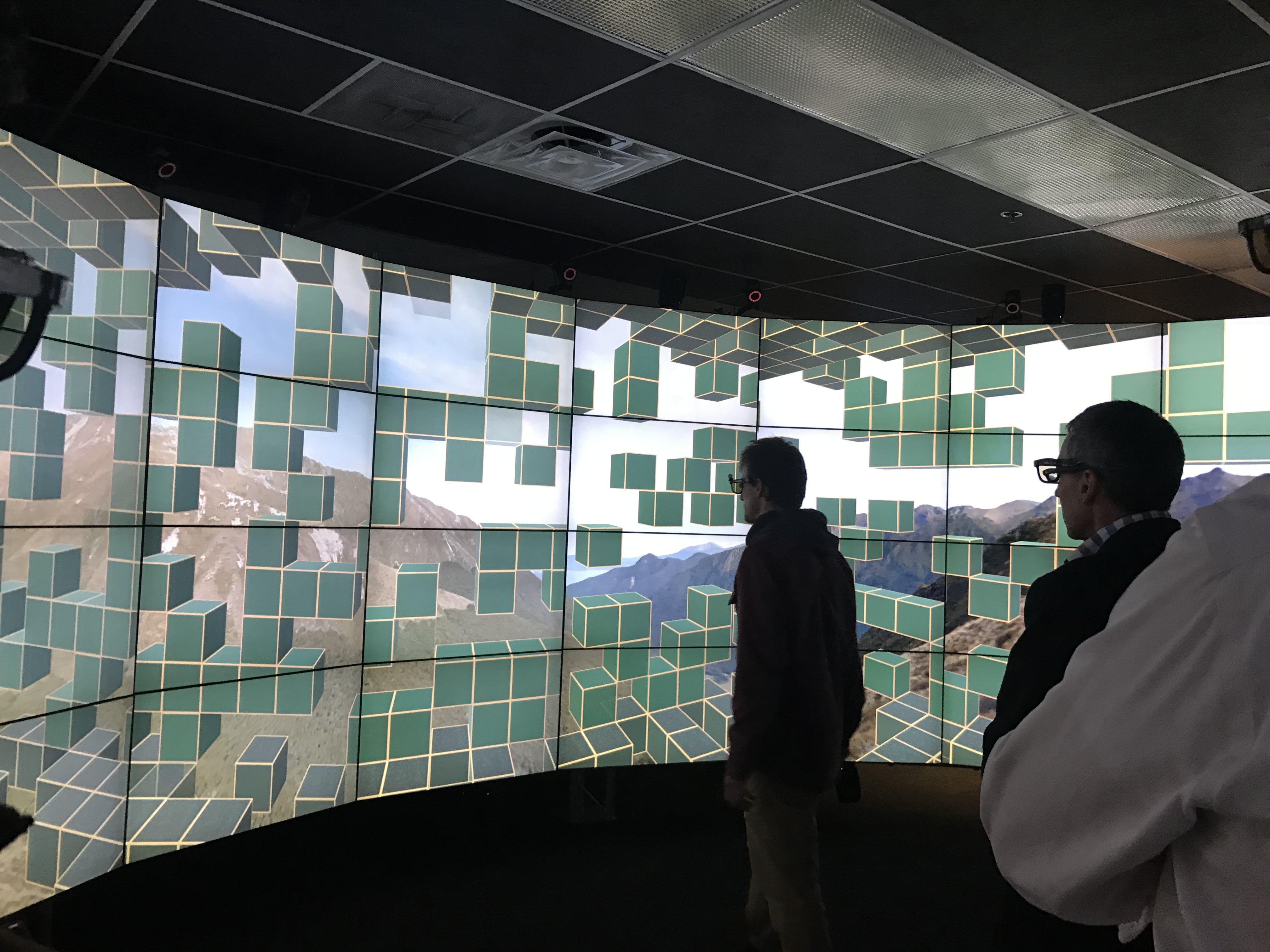
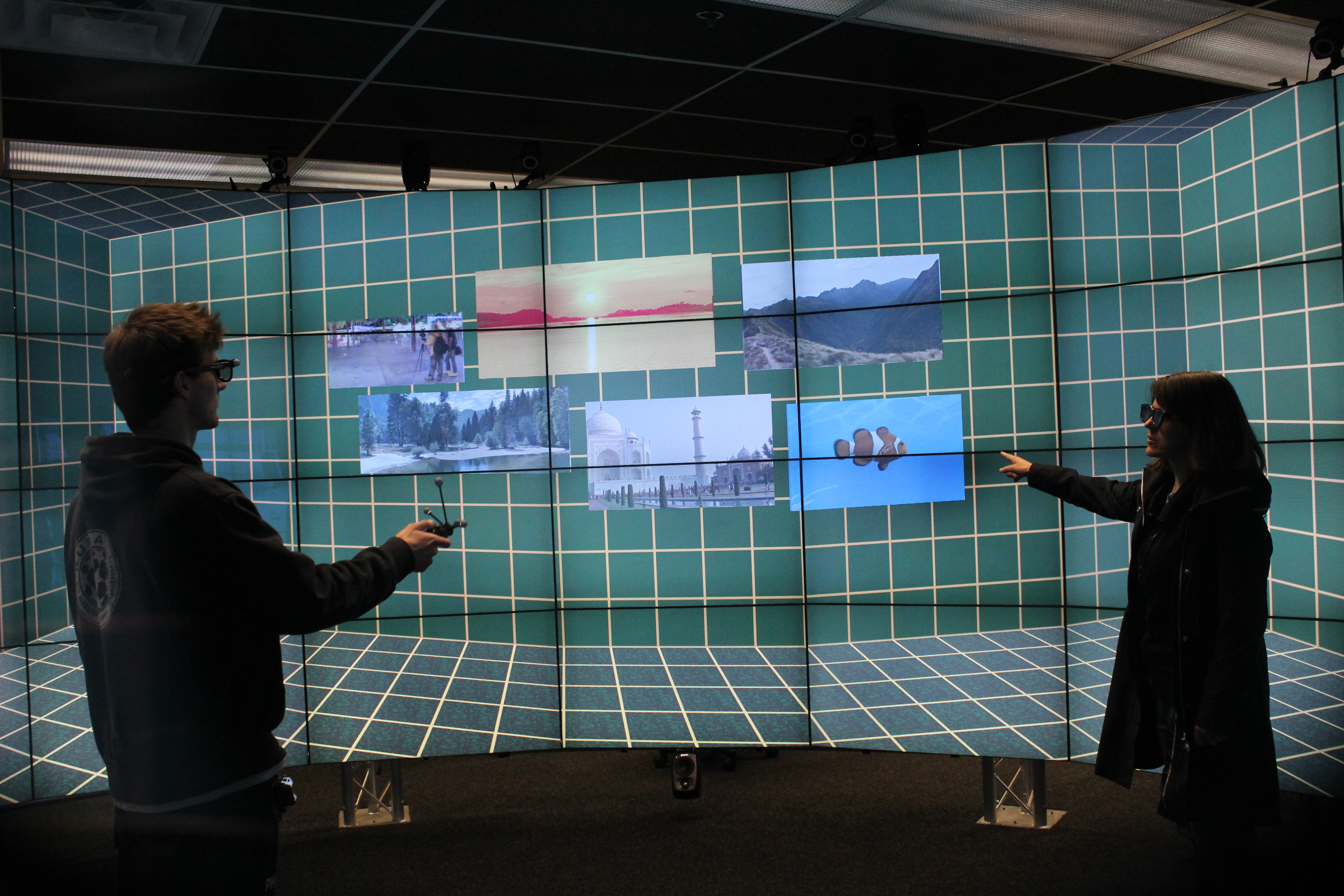
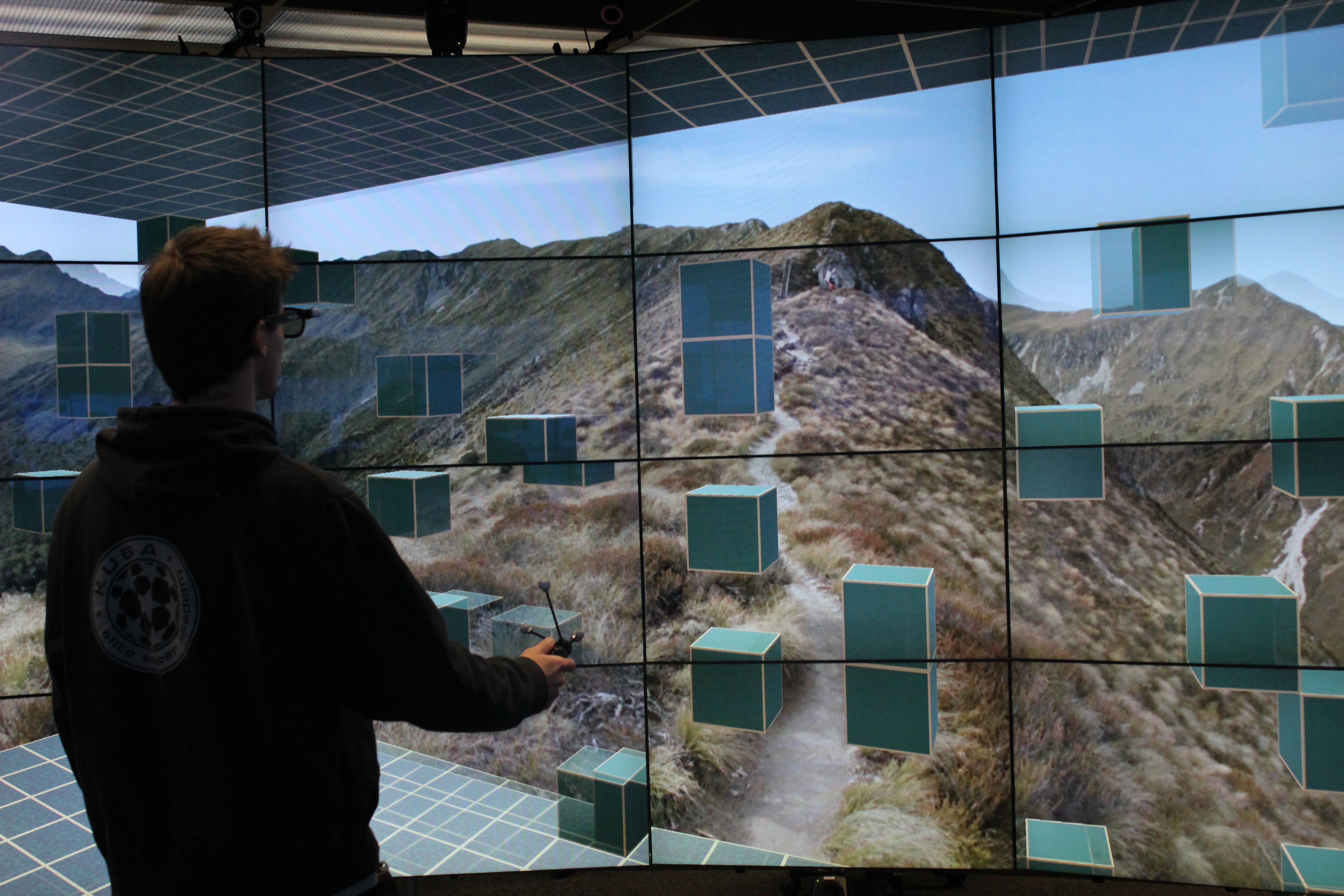
Dreamatorium, inspired by the television sitcom Community, lets participants to explore virtual adventures such as Taj Mahal, Machu Picchu, and Yosemite.
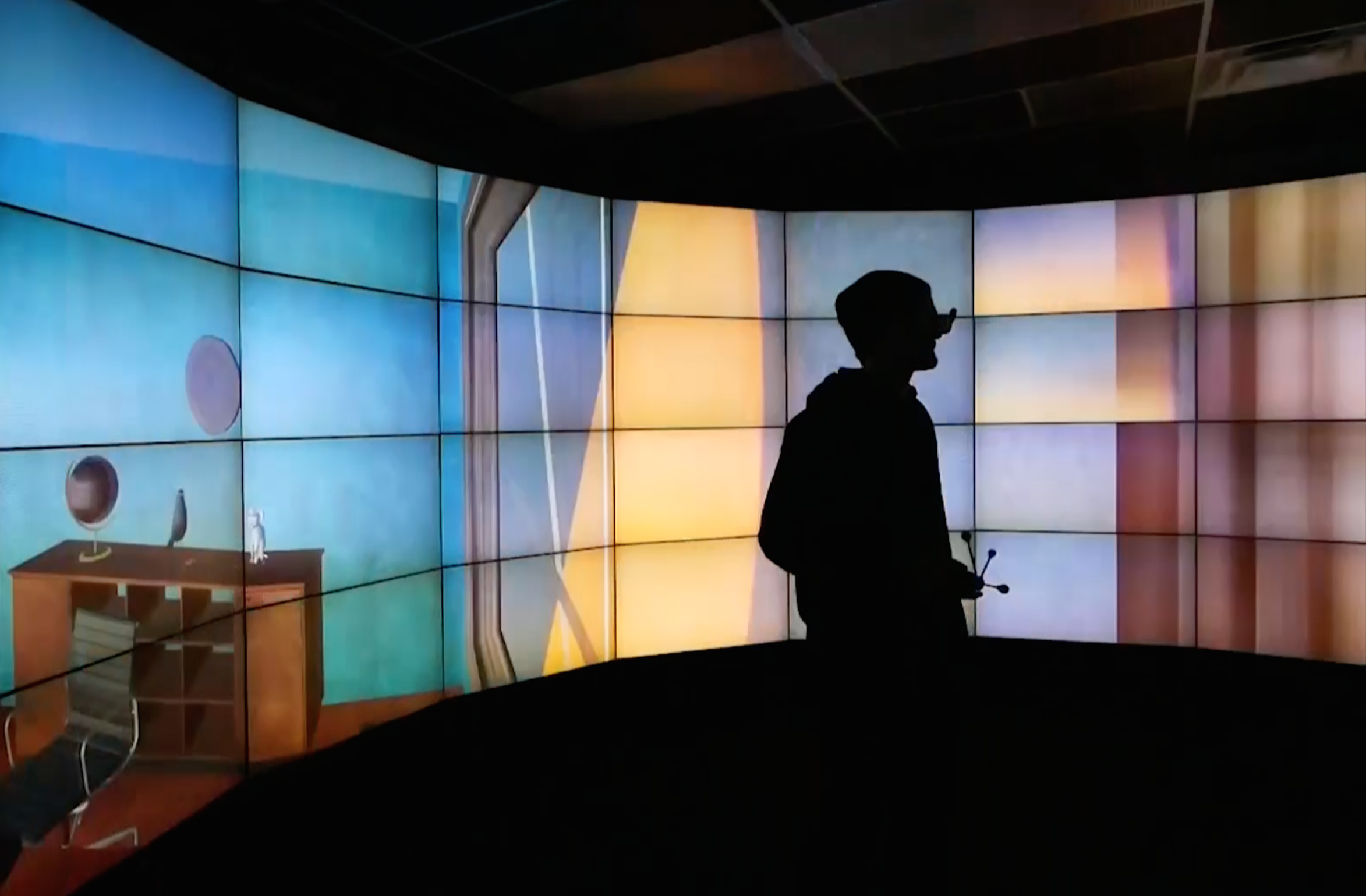

VirtuallyLost lets a user find conceptual connections between 2D and 3D worlds by discovering clues to key puzzles. It was developed by Mitch.
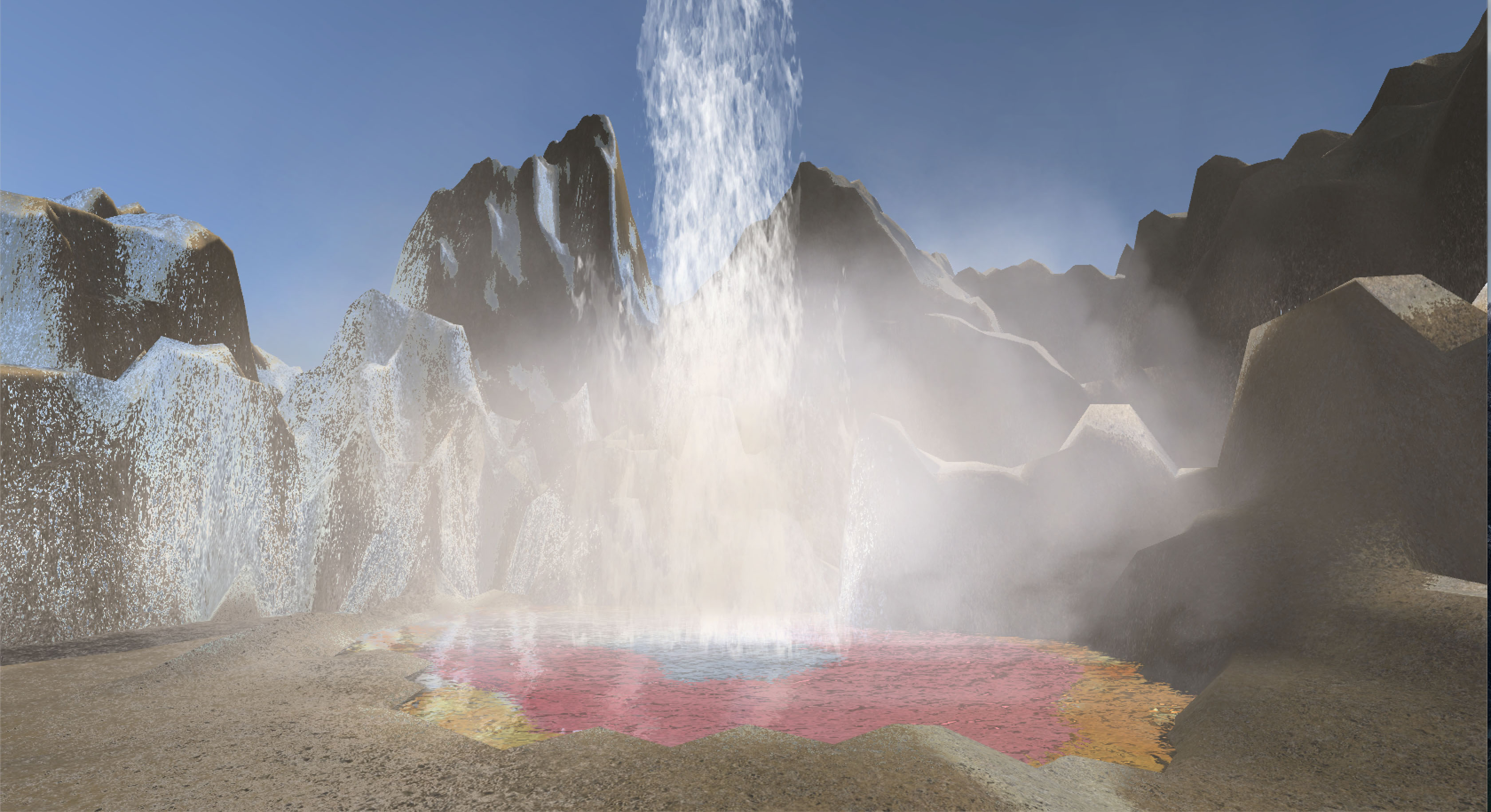
New Faithful is a virtual geiser which eruption determined by generative animation.

Mitch used a typographic analysis of Chicago neighbourhoods to discover their personalities.
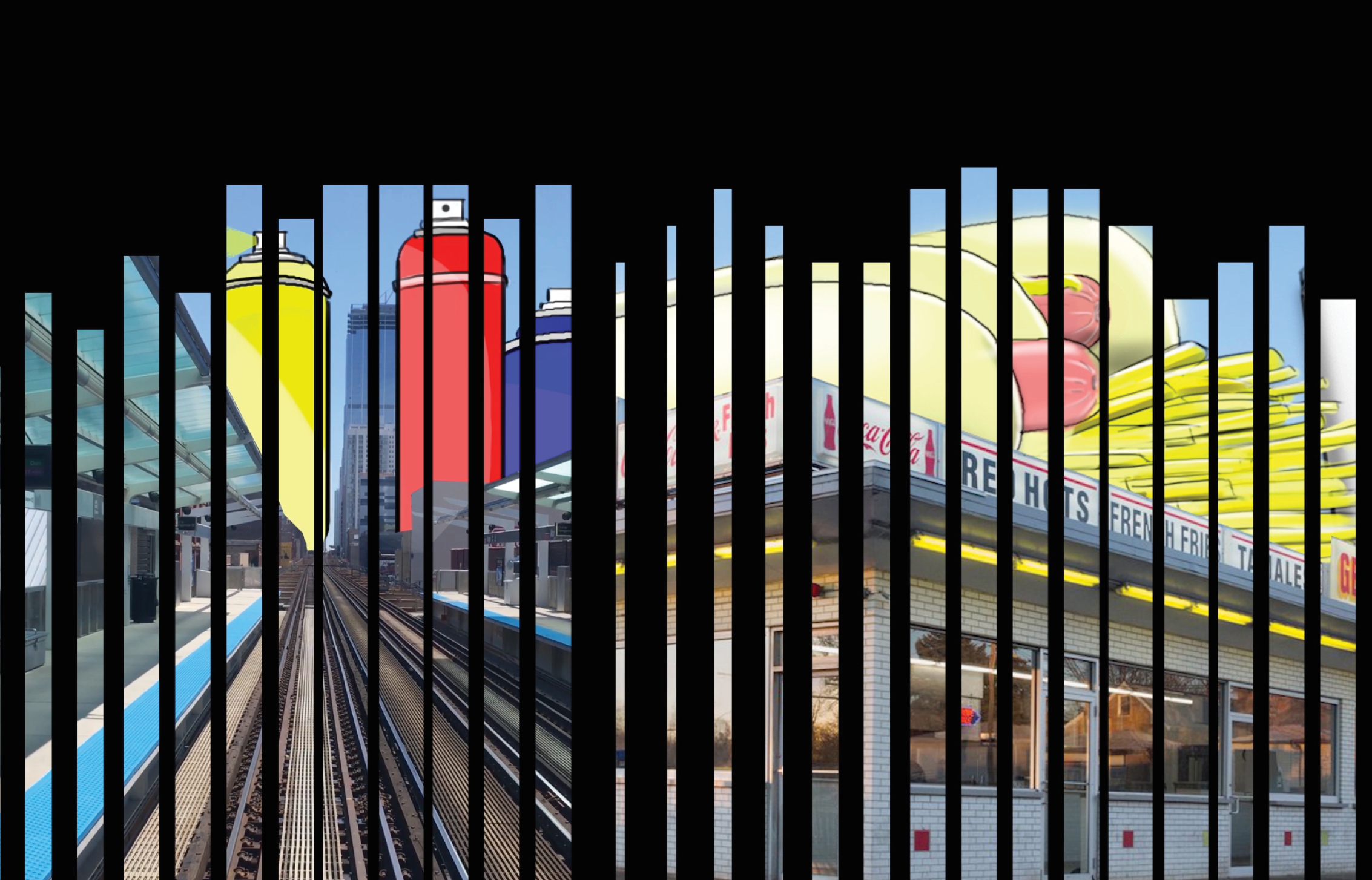
Dyamond and Marcin developed People of Chicago animation to portray multicultural cummnunity of the city through the eyes of its residents.
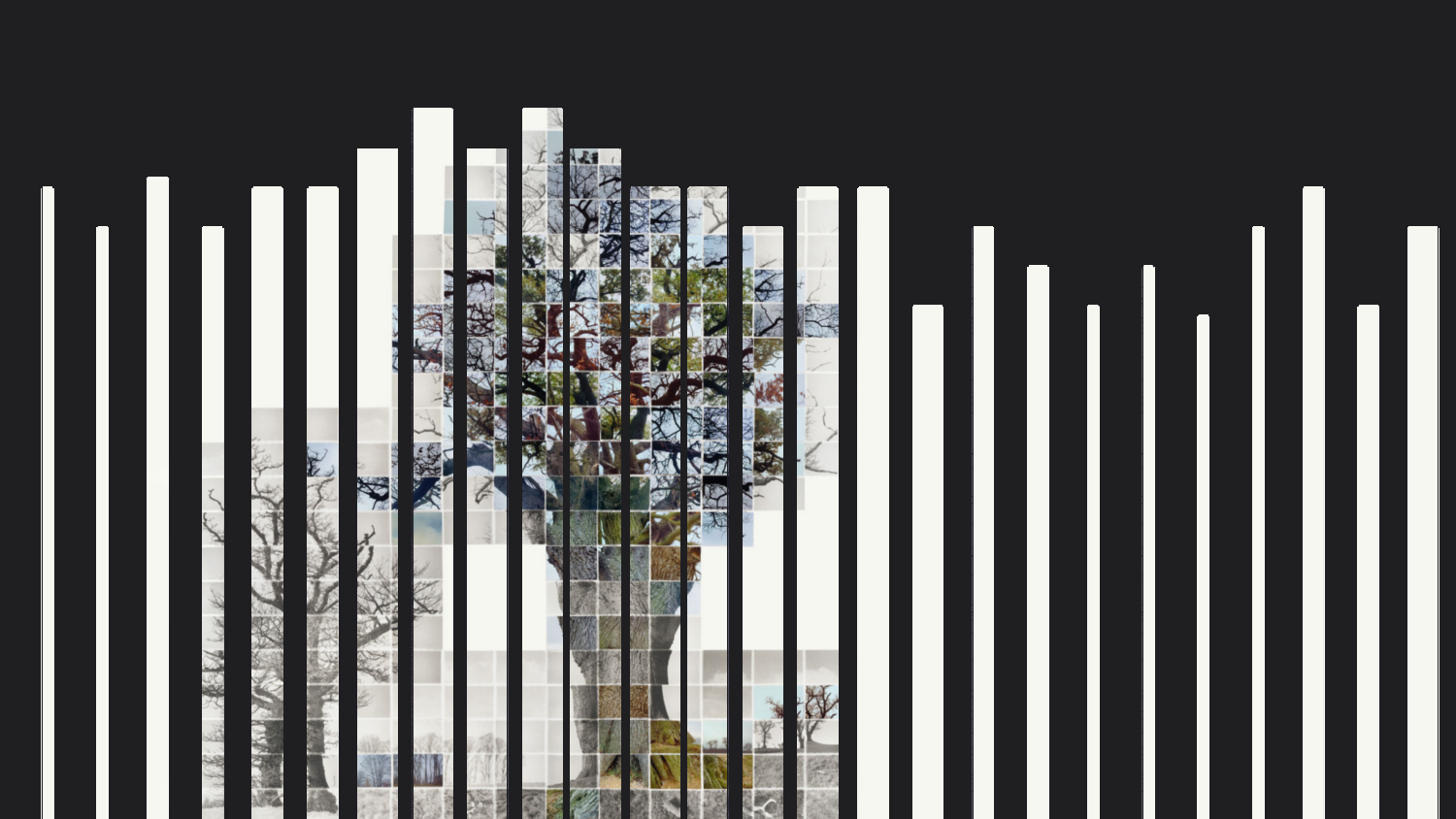
Peter developed Trees of Life, a neural network computer system trained to generate trees of life.
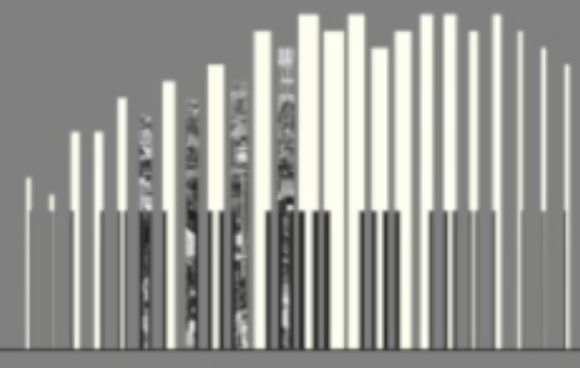
Trevor created a Ragtime animation inspired by 1893 Wolrd Fair capturing sound and historical atmosphere of the city after Chicago Fire.